« Return to all search results
Title Search Results
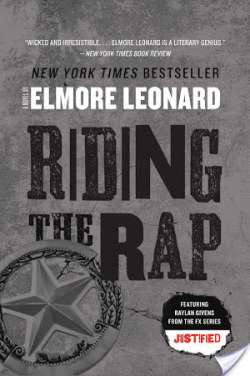
“Wicked and irresistible….Elmore Leonard is a literary genius.” —New York Times Book Review Before U.S. Marshal Raylan Givens began electrifying TV viewers across America (in the hit series Justified), he “starred” in Elmore Leonard’s Riding the Rap—an explosive, twisty tale of a brazen Florida kidnap caper gone outrageously wrong. Chock full of wildly eccentric and deliciously criminal characters—including a psycho enforcer with a green thumb, a Bahamian bad man, and the beautiful, unabashedly greedy psychic Reverend Dawn—Riding the Rap dazzles with Leonard’s trademark ingenious plot turns and razor-keen dialogue. Gripping, surprising, and unforgettable, it is a crime fiction gem that any thriller writer—from past masters John D. MacDonald, Dashiell Hammett, and James M. Cain to the bestselling mystery auteurs of today—would be thrilled to call his own.

Now updated with new material that brings the killer's picture into clearer focus. In the fall of 1888, all of London was held in the grip of unspeakable terror. An elusive madman calling himself Jack the Ripper was brutally butchering women in the slums of London’s East End. Police seemed powerless to stop the killer, who delighted in taunting them and whose crimes were clearly escalating in violence from victim to victim. And then the Ripper’s violent spree seemingly ended as abruptly as it had begun. He had struck out of nowhere and then vanished from the scene. Decades passed, then fifty years, then a hundred, and the Ripper’s bloody sexual crimes became anemic and impotent fodder for puzzles, mystery weekends, crime conventions, and so-called “Ripper Walks” that end with pints of ale in the pubs of Whitechapel. But to number-one New York Times bestselling novelist Patricia Cornwell, the Ripper murders are not cute little mysteries to be transformed into parlor games or movies but rather a series of terrible crimes that no one should get away with, even after death. Now Cornwell applies her trademark skills for meticulous research and scientific expertise to dig deeper into the Ripper case than any detective before her—and reveal the true identity of this fabled Victorian killer. In Portrait of a Killer: Jack the Ripper, Case Closed, Cornwell combines the rigorous discipline of twenty-first century police investigation with forensic techniques undreamed of during the late Victorian era to solve one of the most infamous and difficult serial murder cases in history. Drawing on unparalleled access to original Ripper evidence, documents, and records, as well as archival, academic, and law-enforcement resources, FBI profilers, and top forensic scientists, Cornwell reveals that Jack the Ripper was none other than a respected painter of his day, an artist now collected by some of the world’s finest museums: Walter Richard Sickert. It has been said of Cornwell that no one depicts the human capability for evil better than she. Adding layer after layer of circumstantial evidence to the physical evidence discovered by modern forensic science and expert minds, Cornwell shows that Sickert, who died peacefully in his bed in 1942, at the age of 81, was not only one of Great Britain’s greatest painters but also a serial killer, a damaged diabolical man driven by megalomania and hate. She exposes Sickert as the author of the infamous Ripper letters that were written to the Metropolitan Police and the press. Her detailed analysis of his paintings shows that his art continually depicted his horrific mutilation of his victims, and her examination of this man’s birth defects, the consequent genital surgical interventions, and their effects on his upbringing present a casebook example of how a psychopathic killer is created. New information and startling revelations detailed in Portrait of a Killer include: - How a year-long battery of more than 100 DNA tests—on samples drawn by Cornwell’s forensics team in September 2001 from original Ripper letters and Sickert documents—yielded the first shadows of the 75- to 114 year-old genetic evid...
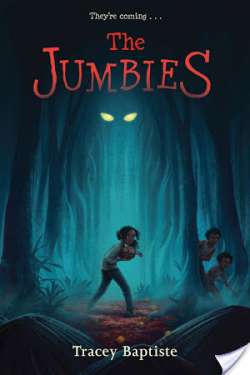
Corinne La Mer claims she isn’t afraid of anything. Not scorpions, not the boys who tease her, and certainly not jumbies. They’re just tricksters made up by parents to frighten their children. Then one night Corinne chases an agouti all the way into the forbidden forest, and shining yellow eyes follow her to the edge of the trees. They couldn’t belong to a jumbie. Or could they? When Corinne spots a beautiful stranger at the market the very next day, she knows something extraordinary is about to happen. When this same beauty, called Severine, turns up at Corinne’s house, danger is in the air. Severine plans to claim the entire island for the jumbies. Corinne must call on her courage and her friends and learn to use ancient magic she didn’t know she possessed to stop Severine and to save her island home.

Margaret Mitchell was as complex and compelling as her legendary heroine, Scarlett O’Hara, and her story is as dramatic as anything out of her own imagination—indeed, it is the basis for the legend she created. Gone With the Wind took the American reading public by storm and went on to become the most popular motion picture of all time. It was a phenomenon whose success has never been equaled—and it shattered Margaret Mitchell’s private life. In this commemorative reprint of Road to Tara, Anne Edwards tells the real story of Margaret Mitchell and the extraordinary novel that has become part of our heritage.
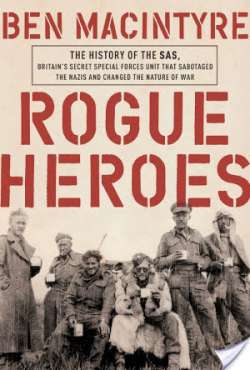
The incredible untold story of WWII’s greatest secret fighting force, as told by our great modern master of wartime intrigue Britain’s Special Air Service—or SAS—was the brainchild of David Stirling, a young, gadabout aristocrat whose aimlessness in early life belied a remarkable strategic mind. Where most of his colleagues looked at a battlefield map of World War II’s African theater and saw a protracted struggle with Rommel’s desert forces, Stirling saw an opportunity: given a small number of elite, well-trained men, he could parachute behind enemy lines and sabotage their airplanes and war material. Paired with his constitutional opposite, the disciplined martinet Jock Lewes, Stirling assembled a revolutionary fighting force that would upend not just the balance of the war, but the nature of combat itself. He faced no little resistance from those who found his tactics ungentlemanly or beyond the pale, but in the SAS’s remarkable exploits facing the Nazis in the Africa and then on the Continent can be found the seeds of nearly all special forces units that would follow. Bringing his keen eye for psychological detail to a riveting wartime narrative, Ben Macintyre uses his unprecedented access to SAS archives to shine a light inside a legendary unit long shrouded in secrecy. The result is not just a tremendous war story, but a fascinating group portrait of men of whom history and country asked the most.
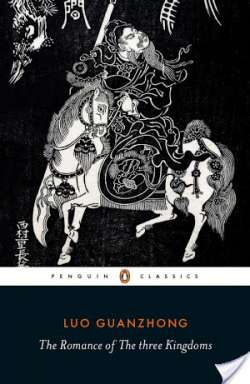
A new translation and abridgement of one of the four classical Chinese novels - an epic story of warring factions in the era of China's Han dynasty Part historical and part legend, The Romance of the Three Kingdoms dramatizes the lives of feudal lords and their retainers, recounting their personal and military battles, intrigues, and struggles to achieve dominance for almost a hundred years. It is one of the most beloved works of East Asian literature, and the most famous historical novel in China.

A vivid historical account of the social world of Rome as it moved from republic to empire. In 49 B.C., the seven hundred fifth year since the founding of Rome, Julius Caesar crossed a small border river called the Rubicon and plunged Rome into cataclysmic civil war. Tom Holland’s enthralling account tells the story of Caesar’s generation, witness to the twilight of the Republic and its bloody transformation into an empire. From Cicero, Spartacus, and Brutus, to Cleopatra, Virgil, and Augustus, here are some of the most legendary figures in history brought thrillingly to life. Combining verve and freshness with scrupulous scholarship, Rubicon is not only an engrossing history of this pivotal era but a uniquely resonant portrait of a great civilization in all its extremes of self-sacrifice and rivalry, decadence and catastrophe, intrigue, war, and world-shaking ambition.
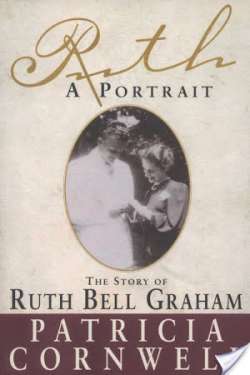
Ruth Bell Graham is known as the wife of evangelist Billy Graham. It was Ruth who influenced Billy, as his most trusted life-partner. In Ruth, a Portrait, we meet this fascinating and remarkable woman. Brimming with anecdotes, this is a breathtaking journey, with stops at many of this century's epoch-making events. The childhood years of the future Mrs. Billy Graham were spent light-years away--in the China of the 1920s and 1930s. The daughter of medical missionaries, she and her family were caught in a crucible of unspeakable hardship; in addition to pestilence and plague, there was the unstable political and military turmoil surrounding the Nationalist government, the Communists, and the Japanese invaders. These hazardous realities shaped Ruth Bell and her family, a family inured to difficulties, but buoyed up by their deep belief in God's abiding will. Virtually raised by the Grahams, the author is a repository of Ruth Bell Graham's stories and has seen firsthand the spirit of this courageous woman. Patricia Cornwell not only gives readers a full, rounded, and intimate portrait of Ruth Bell Graham, but also insight into the life of the Graham family and particularly Billy Graham. From the Trade Paperback edition.
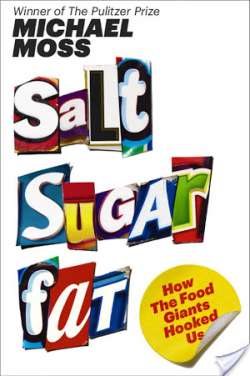
From a Pulitzer Prize-winning investigative reporter at The New York Times comes the troubling story of the rise of the processed food industry -- and how it used salt, sugar, and fat to addict us. Salt Sugar Fat is a journey into the highly secretive world of the processed food giants, and the story of how they have deployed these three essential ingredients, over the past five decades, to dominate the North American diet. This is an eye-opening book that demonstrates how the makers of these foods have chosen, time and again, to double down on their efforts to increase consumption and profits, gambling that consumers and regulators would never figure them out. With meticulous original reporting, access to confidential files and memos, and numerous sources from deep inside the industry, it shows how these companies have pushed ahead, despite their own misgivings (never aired publicly). Salt Sugar Fat is the story of how we got here, and it will hold the food giants accountable for the social costs that keep climbing even as some of the industry's own say, "Enough already."

A hurricane is building over the Gulf of Mexico, threatening the coastal town of Bois Sauvage, Mississippi, and Esch's father is growing concerned. He's a hard drinker, largely absent, and it isn't often he worries about the family. Esch and her three brothers are stocking up on food, but there isn't much to save. Lately, Esch can't keep down what food she gets; at fifteen, she has just realized that she's pregnant. Her brother Skeetah is sneaking scraps for his prized pit bull's new litter, dying one by one. Meanwhile, brothers Randall and Junior try to stake their claim in a family long on child's play and short on parenting. As the twelve days that make up the novel's framework yield to a dramatic conclusion, this unforgettable family - motherless children sacrificing for one another as they can, protecting and nurturing where love is scarce - pulls itself up to face another day.
